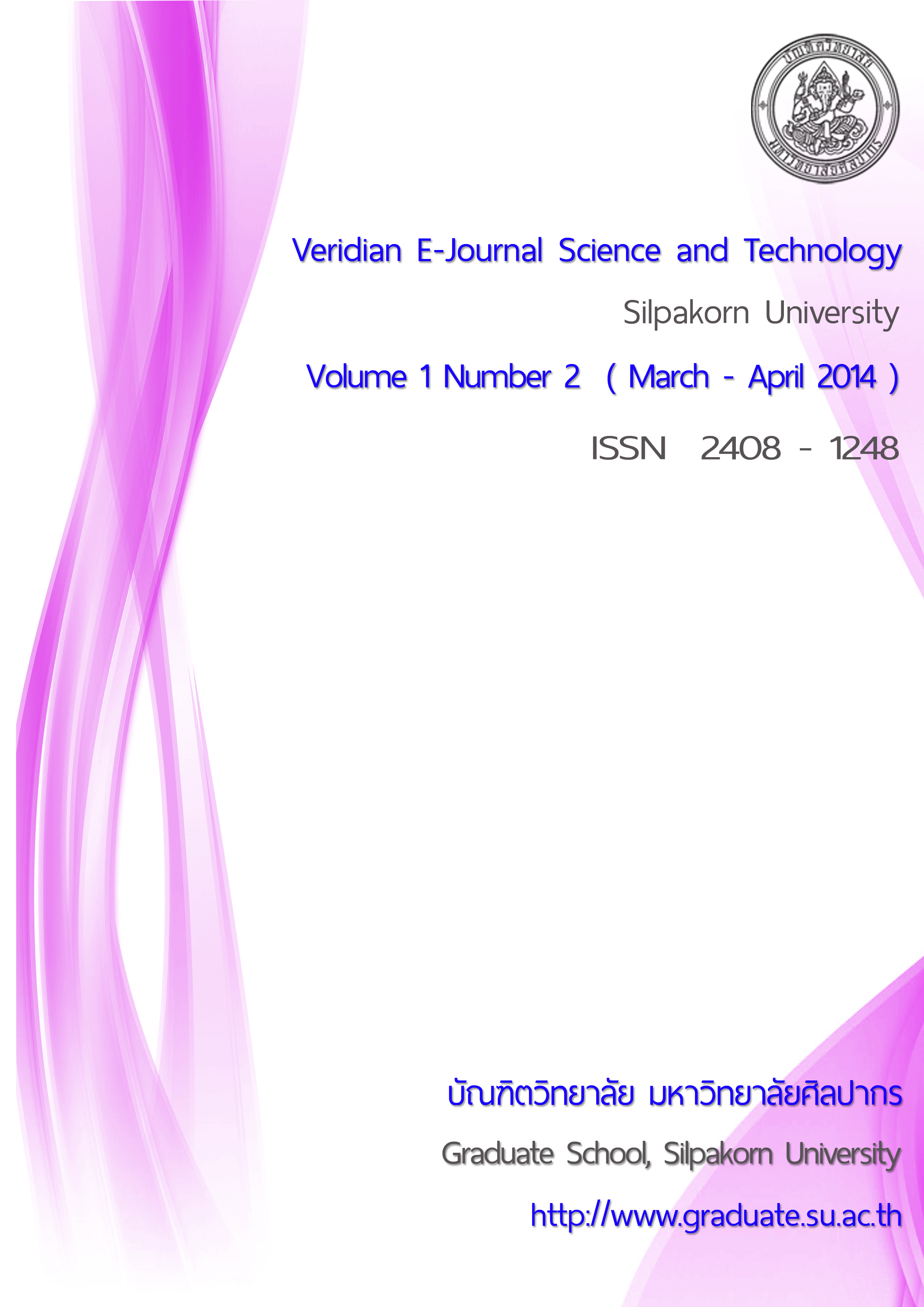การหาปริมาณไนเตรทและไนไตรท์ในเขม่าปืนที่ติดบนผิวรถยนต์ โดยเทคนิคไอออนโครมาโตกราฟี
Main Article Content
บทคัดย่อ
บทคัดย่อ
เขม่าปืน คือ สิ่งที่เกิดขึ้นภายหลังจากการยิงปืน เขม่าปืนเป็นหลักฐานสำคัญที่บอกถึงเหตุการณ์จากการยิงปืนเพราะเขม่าปืนอาจสะสมอยู่บนพื้นผิวโดยรอบ ในงานวิจัยนี้ได้ออกแบบการทดลองเพื่อศึกษาเหตุการณ์การยิงปืนออกมาจากรถยนต์ อาวุธที่ใช้คือ ปืนพกรีโวลเวอร์ยี่ห้อ Smith&Wesson กับลุกกระสุน .38 special ยี่ห้อ THAIARMS และปืนกึ่งอัตโนมัติยี่ห้อ Glock กับกระสุน 9 mm ยี่ห้อ S&B ผู้ยิงนั่งอยู่บนเบาะผู้โดยสารด้านหน้า และยิงปืนครั้งละ 3 นัดจากหน้าต่างโดยระยะห่างระหว่างตัวรถกับปากกระบอกปืนเท่ากับ 2 เซนติเมตร เก็บตัวอย่างจากพื้นผิวของประตูรถยนต์จากส่วนประกอบของหน้าต่างและจากด้านหน้าของรถยนต์ การเก็บตัวอย่างทำทันทีและเก็บที่เวลา 6 ชั่วโมง และ 24 ชั่วโมง ภายหลังการยิงปืน ในการวัดปริมาณไนเตรทและไนไตรท์ ในตัวอย่างใช้เทคนิค ion-chromatography (IC) โดยใช้ปริมาณไนเตรทและไนไตรท์เป็นตัววัดปริมาณเขม่าปืน
ผลการศึกษาพบว่า สำหรับปืนทั้ง 2 กระบอกในตัวอย่างที่เก็บจากประตูรถยนต์มีปริมาณเขม่าปืนมากที่สุด และปริมาณดังกล่าวลดลง ในตัวอย่างที่เก็บภายหลังจากการยิงปืน 6 ชั่วโมงและ 24 ชั่วโมง เวลาในการเก็บตัวอย่างมีผลต่อปริมาณเขม่าปืน ในตัวอย่างที่เก็บจากบริเวณอื่นของรถยนต์เช่นเดียวกัน การศึกษาครั้งนี้แสดงให้เห็นว่าเทคนิค(IC) สามารถตรวจวัดเขม่าปืนได้ และผลจากการทดลองยิงปืนนี้อาจเป็นประโยชน์ในการสืบสวนคดีที่เกี่ยวข้องกับการยิงปืนจากรถยนต์ได้
Abstract
Gunshot residues (GSR) are the discharge residues ejected from a firearm after firing. The GSR provide important evidence related to the firing incident since they may be deposited on the surfaces nearby. In this study, experiments were set up to examine the incident of gun firing from a car. The firearms used were Smith&Wesson revolver with Thaiarm.38 special cartridges and a Glock semiautomatic with S&B 9mm ammunition. The firer was on the front passenger seat and fired the gun successively three times from the window with a car-to-muzzle distance of about 2 cm. Samples were collected from the surface of the car door, the window parts and the car console. The samplings were carried out immediately and at 6 and 24 hours after firing. The technique of ion-chromatography(IC) was employed to measure the amounts of nitrites and nitrates in the sample which were used as an estimate of GSR. For both pistols, the highest amounts of GSR were found in the samples from the car door and the amounts diminished as the sampling time increased. The effect of sampling time on the amount of GSR was also observed in samples from other parts of the car. This study has demonstrated the ability of the IC technique in the detection of GSR and the results from the firing experiments may provide useful information to assist the investigation of case involving gun firing from a car.

